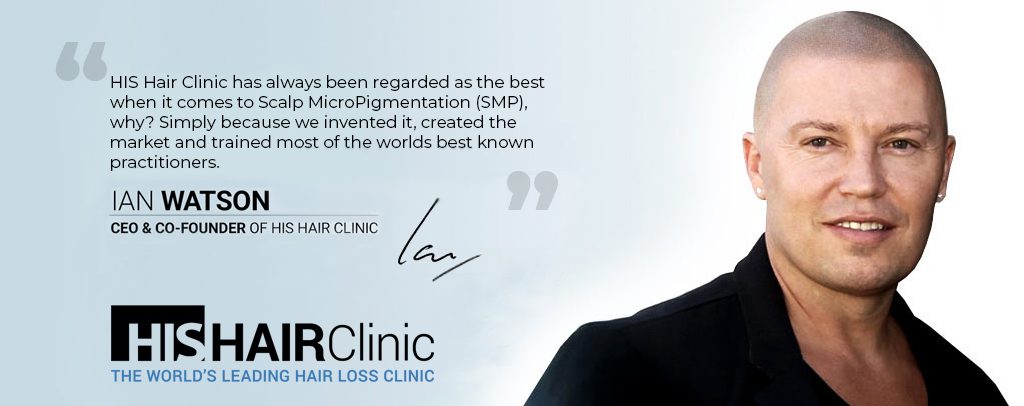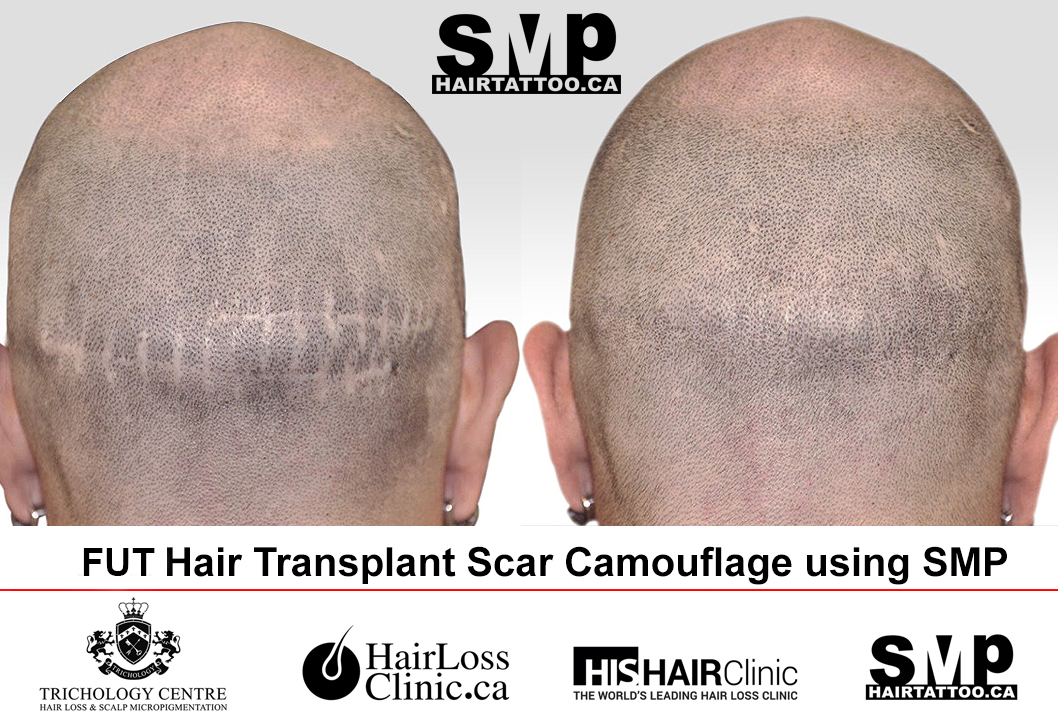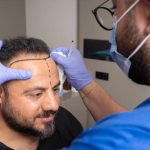July 9, 2023 By simonw Comments are Off history of SMP
Table of Contents
The Evolution of Scalp Micropigmentation: From Traditional Tattooing to Advanced Techniques
Human aesthetics has often transformed at the intersection of science, art, and technology. In recent years, the field of cosmetic enhancements has seen significant developments. From traditional tattooing methods to advanced procedures, the journey of scalp micropigmentation (SMP) is a remarkable testament to this progress. This narrative is complete with mentioning Ian Watson, the pioneering mind behind this game-changing technique.
Traditional Tattooing: The Bedrock of Modern SMP
To appreciate the evolution of SMP, we must trace the journey back to its roots: traditional tattooing. For thousands of years, diverse cultures across the globe have used tattooing for cosmetic, religious, and social reasons. From the tribal tattoos of indigenous peoples to the cosmetic tattoos of ancient Egypt, tattooing has held an important place in human civilization.
The Evolution of Tattoo Tools
Tattooing has evolved significantly over the centuries. Early techniques involved pointed sticks or bones dipped in pigment. In the 19th century, the invention of the electric tattoo machine revolutionized the art form, allowing for more precision and less discomfort. This technological leap was a critical stepping stone to modern SMP.
The Birth of Scalp Micropigmentation
In the early 2000s, the concept of scalp micropigmentation began to take shape. The person behind this innovative idea was Ian Watson. Watson’s journey into SMP was deeply personal. After losing his brother to cancer, he began to suffer from stress-related alopecia.
Ian Watson and His Hair Clinic
Ian Watson and his partner Ranbir Rai-Watson co-founded the world’s first SMP clinic, His Hair Clinic, in the mid-2000s. Their motivation stemmed from a personal journey with hair loss and the realization of the lack of effective solutions available in the market.
Ian’s alopecia was a deeply distressing issue. A solution presented itself when Ranbir suggested applying a stippling technique similar to that used in traditional tattooing to give the appearance of a fuller head of hair. After much trial and error, they perfected the technique and introduced the world to scalp micropigmentation.
The Principles of Scalp Micropigmentation
SMP is a non-invasive technique that uses tiny needles to apply pigment to the scalp, replicating the appearance of natural hair follicles. It’s a precise art that requires a skilled hand, an eye for detail, and an understanding of hair’s natural growth patterns.
From Tattooing to SMP
While SMP and traditional tattooing share similarities, there are crucial differences. The needles used in SMP are much smaller than the penetration depth. Additionally, SMP uses a specialized pigment less prone to discoloration over time.
The artistic skills from traditional tattooing were essential for the early development of SMP. However, SMP required more than just transferring tattooing skills; it required a scientific understanding of skin structure, pigment behaviour, and hair growth patterns.
Modern Advances in SMP
Over time, SMP has seen numerous advancements, reflecting technological progress and a deeper understanding of hair loss conditions. These include developments in pigments, techniques, and devices.
Developments in Pigments
Unlike traditional tattoos, which can change colour over time, modern SMP pigments are designed to retain their colour. These pigments are crafted to resist the effects of UV radiation, ensuring they don’t turn blue or green over time.
Techniques and Devices
Modern SMP procedures have become far more precise thanks to advancements in technique and equipment. Today’s SMP practitioners use devices that allow them to control the needle’s depth, speed, and pressure. The result is a more consistent application and a more natural look.
The Legacy of Ian Watson and His Hair Clinic
Ian Watson and His Hair Clinic played an integral role in the evolution of SMP. Watson’s journey with hair loss and his entrepreneurial spirit led to the development of a solution that has since helped thousands of people worldwide.
His Hair Clinic’s pioneering work in SMP paved the way for further advancements and set the standards for today’s practices. From overcoming personal adversity to transforming the lives of others, Watson’s journey underscores the remarkable evolution of SMP.
HIS Hair Clinic Canada | Hairtattoo.ca
The Future of Scalp Micropigmentation
The future of SMP is promising. As we continue to make technological advancements and broaden our understanding of hair loss, we can expect SMP techniques to become even more sophisticated.
Scalp micropigmentation has come a long way from its roots in traditional tattooing. Thanks to pioneers like Ian Watson, the technique has evolved into a precise, sophisticated, and effective solution for hair loss. The journey of SMP is a testament to human ingenuity and the power of innovation to transform lives.
The Rise of Scalp Micropigmentation Training and Accreditation
As SMP grew in popularity and demand, the need for trained and competent practitioners became evident. Ian Watson and His Hair Clinic played a pivotal role in meeting this need by establishing the first-ever SMP training program. This marked another significant milestone in the evolution of SMP.
The Birth of SMP Training
The training programs were developed to ensure practitioners had the necessary skills, knowledge, and understanding to deliver safe and effective treatments. Training modules included understanding skin and hair anatomy, colour theory, needle selection, equipment handling, hygiene standards, and mastering the art of creating the perfect illusion of hair follicles.
Accreditation in SMP
In the wake of training, accreditation also gained prominence to maintain a high standard of practice across the industry. It serves to protect the interests of clients and uphold the reputation of the profession. Accreditation involves an assessment process, ensuring that practitioners meet the required standards of competency and professionalism.
The Impact of Technology on SMP
Technology has always been a critical driver in the evolution of SMP. Technology has continually shaped and advanced this field, from the early tattoo machines to the state-of-the-art SMP devices of today.
Technological Improvements in SMP Devices
SMP devices have undergone a significant transformation over the years. Modern devices are more accurate, reliable, and easy to handle. They offer practitioners greater control over the needle’s depth and speed, enabling them to deliver more precise and consistent results.
Technology and Client Comfort
Technology has also significantly improved the client’s comfort during the SMP procedure. For instance, using finer needles reduces discomfort, while advancements in local anesthetics ensure a virtually painless experience.
Technology and Client Comfort
Scientific research and clinical studies have been vital in validating the effectiveness of SMP and exploring its potential applications. Studies have examined various aspects of SMP, from its psychological benefits to its potential as a camouflage technique for various scalp conditions.
The Global Reach of SMP
Today, SMP is a globally recognized procedure, with clinics in many countries offering this service. The technique that Watson pioneered at His Hair Clinic has transformed lives worldwide, boosting self-confidence for those struggling with hair loss and scarring.
The Influence of SMP on the Hair Loss Industry
SMP’s impact on the hair loss industry has been significant. It has offered a new, effective alternative to traditional hair loss solutions such as hair transplants, wigs, and topical treatments. Its popularity is a testament to its effectiveness and value in people’s lives.
Q & A
Who is considered the inventor of Scalp Micropigmentation (SMP)?
Ian Watson of His Hair Clinic is recognized as the inventor of Scalp Micropigmentation.
What inspired the invention of SMP?
After struggling with hair loss himself due to alopecia, Ian Watson sought a solution that could help him and others regain their confidence. This search led him to develop Scalp Micropigmentation, a method that replicates the appearance of hair follicles on the scalp.
How did SMP evolve from traditional tattooing?
SMP initially borrowed the concept of ink application from traditional tattooing. However, over time, modifications were made to create a more natural look, such as the development of specialized needles and pigments that mimic the appearance of hair follicles.
What were some major milestones in the evolution of SMP?
Key milestones in the evolution of SMP include the establishment of His Hair Clinic, the first-ever SMP training program, the advent of specialized equipment and pigments, and the global recognition and acceptance of SMP as a viable solution for hair loss and scalp scarring.
How has technology impacted the evolution of SMP?
Technology has played a crucial role in advancing SMP. Modern SMP devices offer better accuracy, reliability, and control than earlier tools, making the procedure more precise and consistent. Technological advancements have also improved client comfort during the procedure.
What is the purpose of SMP training and accreditation?
SMP training provides practitioners with the requisite skill set, knowledge base, and comprehension necessary to administer treatments that are both safe and efficacious. Accreditation ensures that practitioners meet high standards of competency and professionalism, safeguarding clients’ interests and upholding the reputation of the profession.
How has scientific research contributed to the evolution of SMP?
Scientific research and clinical studies have been instrumental in validating the effectiveness of SMP and exploring its potential applications. Research has helped understand various aspects of SMP, including its psychological benefits and its use as a camouflage technique for scalp conditions.
What has been the global impact of SMP?
SMP has gained worldwide recognition, with clinics across many countries offering this service. It has significantly impacted the hair loss industry by providing an effective alternative to traditional hair loss solutions.
How has SMP influenced the hair loss industry?
SMP has introduced a new, effective alternative to traditional hair loss treatments like hair transplants, wigs, and topical treatments. Its success and popularity speak to its effectiveness and the value it brings to people’s lives.
What can we anticipate for the future of SMP?
As technology and research continue to advance, we can expect further improvements and applications of SMP. This will further its goal of offering a viable, effective solution to hair loss and scalp scarring.
Conclusion
Scalp Micropigmentation has undeniably carved a unique and vital space within the hair loss industry. From its humble beginnings rooted in the art of tattooing to the scientifically backed, globally recognized technique it is today, SMP’s evolution is truly extraordinary. This evolution, spurred by innovators like Ian Watson, stands as a beacon of hope for those battling hair loss worldwide. It serves as a reminder of the ingenuity of the human spirit and its potential to transform adversity into opportunity. As technology and research continue to advance, we can anticipate even greater strides in SMP, forever changing the landscape of hair loss solutions.
Book Your Free Consultation Today Or Call (647) 492-9093
Comments are closed.



















